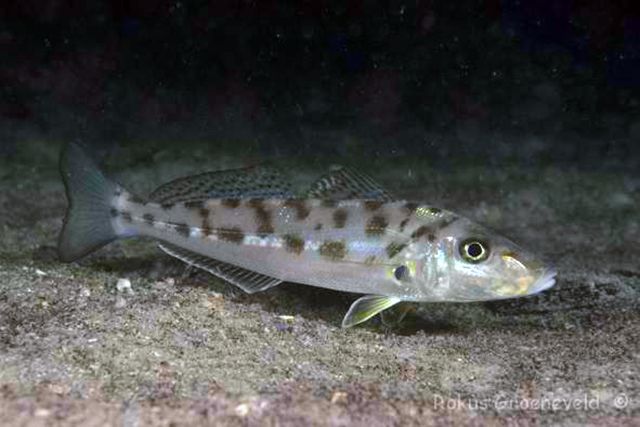| Sillaginidae (Smelt-whitings) |
| 36 cm SL (male/unsexed) |
|
demersal; marine; depth range 0 - 36 m, oceanodromous |
| Western Central Pacific: Indonesia, southern New Guinea and northern Australia. Frequently confused with Sillago maculata which occurs in eastern Australia. |
|
Dorsal spines (total): 12-12; Dorsal soft rays (total): 19-21; Anal spines: 2-2; Anal soft rays: 18-20; Vertebrae: 34-36. Swim bladder with four anterolateral extensions that are more complex than S. aeolus, but much shorter than S. maculata. Body coloration is very similar to S. maculata and S. aeolus. Body with oblique bars which are not joined as in S. maculata. The upper blotches are small, the black spot at the base of the pectoral fin is indistinct. The lateral silvery stripe is noticeable but may be quite faded. |
| Most abundant on silty-sand or muddy substrates. Large adults feed near gutters and sandbars inside Shark Bay and move into deeper waters of marine embayments. Juveniles frequent seaweed banks and broken bottom and occur in large numbers near mangrove creeks. They enter coastal rivers in the Swan and Mandurah estuaries in western Australia. Oviparous (Ref. 205), and are multiple spawners with synchronous development (Ref. 36823). Juveniles and adults are commonly trawled with S. robusta and S. lutea (Ref. 6205). Marketed fresh (Ref. 9679). |
|
Not Evaluated (N.E.) Ref. (130435)
|
| harmless |
Source and more info: www.fishbase.org. For personal, classroom, and other internal use only. Not for publication.
